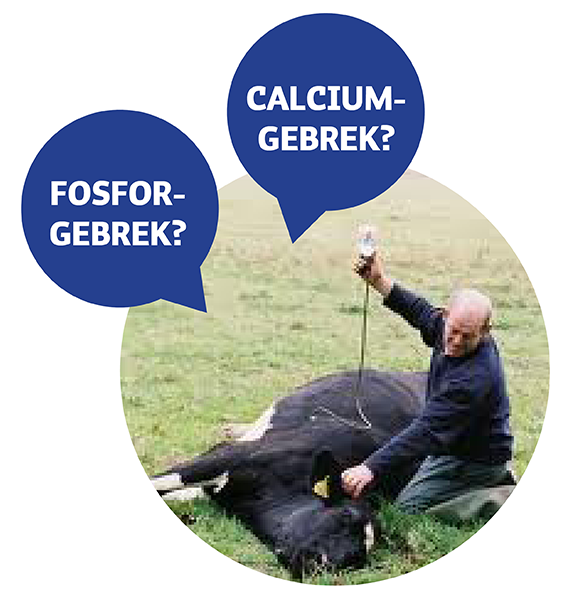Leesvoer (Rund)
- Laatste nieuws
- Leesvoer (Alpaca)
- Leesvoer (Honden & Katten)
- Leesvoer (Ongedierte)
- Leesvoer (Paard)
-
Leesvoer (Rund)
- Afrastering (Hoe werkt afrastering?)
- Boterzuurbacterie
- DCD Certificaat
- De Gelatineboli
- De invloed van biest op diarree bij kalveren.
-
Fosforgebrek (P)
- Het belang van biest voor pasgeboren dieren
- Hittestress
- Klinische melkziekte
- Lang leve de koe!
- Mastitis & tepelcanules: welke, wanneer en hoe?
- Meten is weten
- Ontworming zonder kalender
- Slepende Melkziekte
- Uierverzorging
- Vergiftiging door het eten van onrijpe eikels
- Vliegenbestrijding in de stal
- Vliegenbestrijding op vee
- Zomerdeken voor kalfjes
- Zomerwrang
- Zoutbehoefte
- Afrastering (jongvee)
- Diarree bij kalveren
- Selenium verstrekken
- Leesvoer (Schaap)
- Productintroducties
Fosforgebrek (P)
Fosforbehoefte rond het afkalven is een steeds groter probleem
Een directe fosforbehoefte treedt vaak op rondom het kalven: de koe verliest fosfor via de biest en melk en neemt daarnaast rondom het kalven minder voer op. Een dalende voeropname rond het afkalven is dan ook de belangrijkste oorzaak van fosforgebrek bij koeien.
Slechte opname
Fosforgebrek ligt dus niet alleen aan een te krappe fosforvoorziening in de droogstand, maar meer aan de slechte opname van mineralen rondom het afkalven. Daarom is het verstrekken van een langwerkende bolus met het DCD keurmerk, zoals Uno Dry, een must.
Melkziekte
Een directe fosforbehoefte treedt vaak tegelijkertijd met melkziekte (calciumtekort) op. Een koe die een tekort aan fosfor heeft, lijkt op een koe die melkziekte heeft. De symptomen zijn identiek, bij beide kan de koe namelijk niet opstaan.
Een koe met melkziekte is echter koud, sloom en reageert op een CMK7 infuus (calcium-/magnesiuminfuus). Een koe met een directe fosforbehoefte is niet koud, is alert en reageert niet of nauwelijks op het verstrekken van een CMK7 infuus.
Praktijktip
Voel aan de oren van de koe. Bij warme oren is er meestal een gebrek aan fosfor. Bij koude oren duidt dit meestal op een calciumtekort.
Als een koe voor melkziekte wordt behandeld en daarop reageert (de koe gaat staan en eet weer), kan de koe meestal op eigen kracht het eventuele fosfortekort opheffen. Er zijn echter koeien die na een aantal infusen nog steeds niet kunnen staan; deze koeien moeten extra fosfor binnen krijgen. Dit kan perfect door fosforbolussen te verstrekken.
Herkenningspunten van een directe fosforbehoefte zijn:
- Koeien die veel liggen (de zogenoemde 'downer' koeien);
- Hardnekkige melkziektegevallen;
- Trage koeien;
- Vermindering van het herkauwen;
- Niet of onvoldoende reageren op een infuusverstrekking.
Herkent u bovenstaande punten? Geef deze koe dan 2 fosforbolussen!




